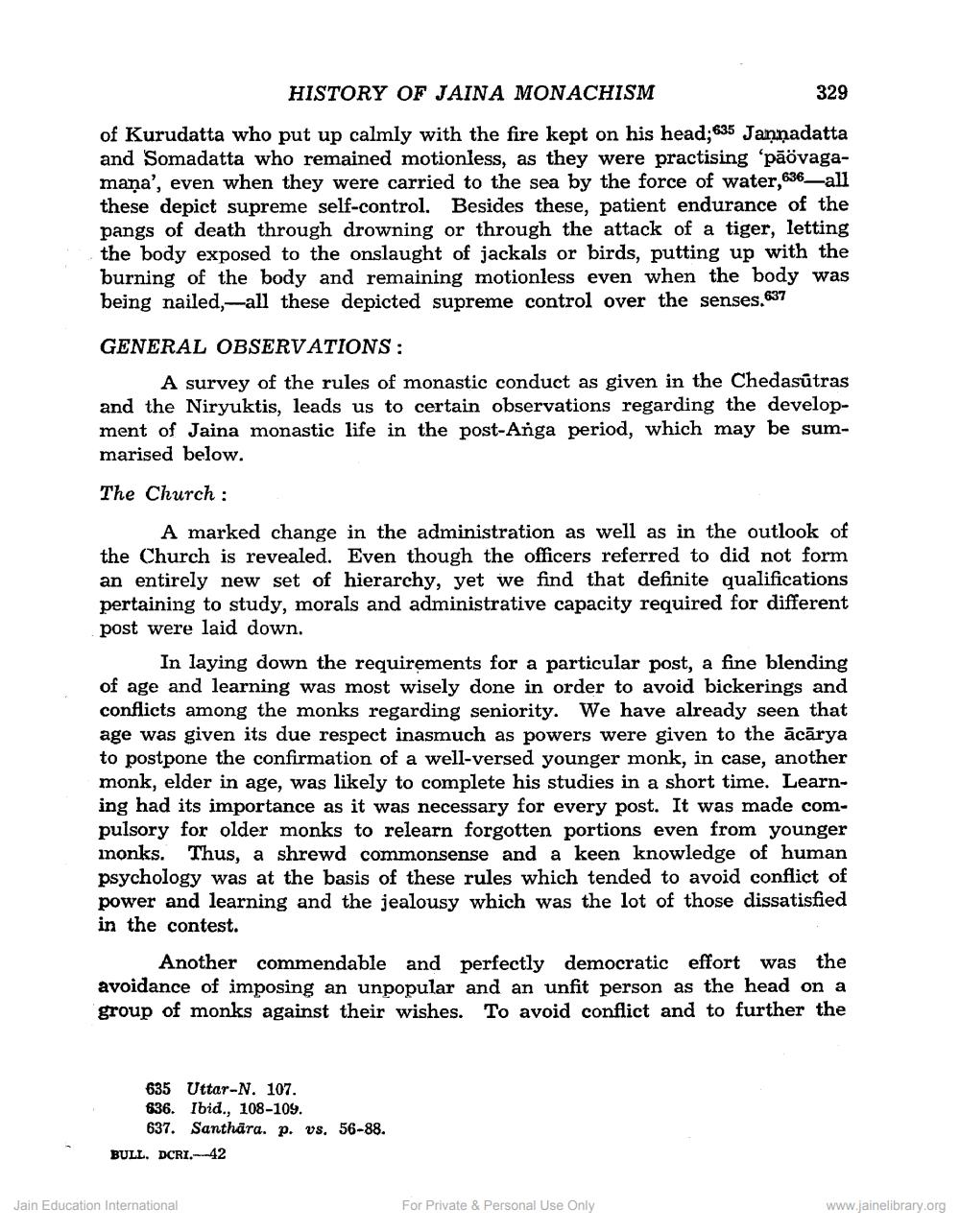________________
HISTORY OF JAINA MONACHISM
of Kurudatta who put up calmly with the fire kept on his head;635 Jannadatta and Somadatta who remained motionless, as they were practising 'päövagamana', even when they were carried to the sea by the force of water, all these depict supreme self-control. Besides these, patient endurance of the pangs of death through drowning or through the attack of a tiger, letting the body exposed to the onslaught of jackals or birds, putting up with the burning of the body and remaining motionless even when the body was being nailed, all these depicted supreme control over the senses.7
GENERAL OBSERVATIONS:
A survey of the rules of monastic conduct as given in the Chedasutras and the Niryuktis, leads us to certain observations regarding the development of Jaina monastic life in the post-Anga period, which may be summarised below.
The Church:
A marked change in the administration as well as in the outlook of the Church is revealed. Even though the officers referred to did not form an entirely new set of hierarchy, yet we find that definite qualifications pertaining to study, morals and administrative capacity required for different post were laid down.
In laying down the requirements for a particular post, a fine blending of age and learning was most wisely done in order to avoid bickerings and conflicts among the monks regarding seniority. We have already seen that age was given its due respect inasmuch as powers were given to the ācārya to postpone the confirmation of a well-versed younger monk, in case, another monk, elder in age, was likely to complete his studies in a short time. Learning had its importance as it was necessary for every post. It was made compulsory for older monks to relearn forgotten portions even from younger monks. Thus, a shrewd commonsense and a keen knowledge of human psychology was at the basis of these rules which tended to avoid conflict of power and learning and the jealousy which was the lot of those dissatisfied in the contest.
329
Another commendable and perfectly democratic effort was avoidance of imposing an unpopular and an unfit person as the head on a group of monks against their wishes. To avoid conflict and to further the
635 Uttar-N. 107. 636. Ibid., 108-109.
637. Santhāra. p. vs. 56-88.
BULL. DCRI.42
Jain Education International
For Private & Personal Use Only
www.jainelibrary.org




